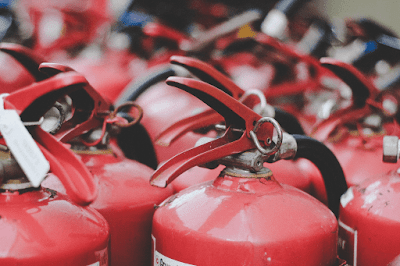How to Choose a Gun Safe
by Chip Lohman – Tuesday, January 16, 2018
There are many reasons why you as a gun owner should seriously consider investing in a gun safe. The first is to prevent children who are too young to understand gun safety from gaining access to your firearms…and even if your children are well-educated and responsible, consider that their friends may not be. Furthermore, it’s important to protect your valuable guns from fire damage.
Finally, there’s the issue of burglary. The frontline defense against theft is for people to not know about your guns at all. However, if you’ve been seen with a large number of guns at the range or if your name is associated with a collection through a consignment sale at the local gun store, your first line of defense-anonymity-may have already been compromised.
According to industry experts who contributed to this article, the greatest risk to the firearms owner is fire, followed secondly by the threat of an opportunistic thief. From Doug Tarter of Ft. Knox Safes, “The typical thief rarely targets a firearms vault armed with an acetylene torch or drill. It is more likely that they will discover the safe after breaking-in to your residence and use your tools to gain access, like the sledge hammer in the garage leaning against the safe.”
Floor Attachment
If you hauled it in, a thief can haul it out. Don’t allow a thief to roll your safe out the door with a simple hand truck. Plan to bolt it to the floor using a safe designed with this feature in mind. And, once again, this tactic assumes the thief knows about your safe to begin with. Be creative.
Box First, then the Hardware
Don’t be distracted by marketing emphasis on bolts, hinges and locks when the safe’s box structure could be nothing but a “soup can.” Shop first for a vault with walls and insulation designed to withstand a high-temperature fire or a beating from an axe. If it meets these criteria, then continue with an examination of bolts, hinges and the locking mechanism. From Mike Baker of Cannon Safes:
“How a door is constructed is a big factor in keeping it closed. You want a door that is rigid and has structural support around the edges so it doesn’t buckle under stress. When it comes to what is holding the door in, you can look at two things: First, how is the door jamb constructed? Some safe doors can be flexed with just your hands. Secondly, check to see what percentage of the door makes contact behind the jamb. A safe with 40 1-inch bolts looks massive but only provides 40 inches of contact. A safe with five 1-inch bolts with a jeweler’s lug (special hinge) that goes from top to bottom on the hinge side would provide 59 inches of support on a 5-foot-tall safe.”
Which Lock?
Combination
Pros: Low maintenance; no batteries; more difficult to observe combination sequence.
Cons: Slow to operate; can be temperamental; unless a reputable brand is used, the combination may be easier to defeat; must have locksmith change combination for you.
Electronic
Pros: Easy to use; cost effective; flexible (high-end models can integrate with home security/surveillance systems); more features (multiple user combinations and penalty lockouts); does not require a locksmith to change the combination. Ask the salesman which lock they selected for their personal safe. Several we spoke with use an electronic lock.
Cons: Require battery changes. If you frequently change and, as a result, forget the combination, a locksmith will have a hard time opening it. (Fingerprint wear on electronic locks is a myth. They actually use a non-wearing material.)
Biometric
Pros: Similar to electronic locks-speed, ease and flexibility; most allow for the storage of several fingerprints.
Cons: Not 100 percent reliable (if your finger is dirty, the lock may not work); expensive; still a developing technology. Should be much better in a few years.
Fire
The more likely threat to your firearm collection is a house fire. Even though you may take excellent care of your home, a neighbor’s fire or a nearby lightning strike can send burning embers onto your roof. And unless you have a special insurance rider, the loss could be expensive, to say nothing of irreplaceable heirloom pieces. Consequently, the lining becomes one of the most important practical considerations when shopping for a vault. Watch for the thickness and type of insulation, the existence of gaps in the lining, and how the lining is attached to the safe walls.
A typical house fire lasts about an hour-often only minutes, sadly. The hottest room tends to be the master closet; the coolest is usually the garage or basement on an exterior wall. A house fire burns at about 1200oF and safes are frequently rated to maintain an internal temperature of no more than 350oF for X number of minutes. Paper chars at about 420oF and typical polymer guns begin to melt at 480oF. The use of fire insulation such as gypsum has been a big improvement in gun safes. When heated, the steam emitted from gypsum helps cool internal temperatures during a fire and creates overpressure that keeps outside temperatures at bay. When evaluating fire endurance, don’t overlook the simple criteria of a safe’s weight. If you have two safes of equal dimensions but varying weight, the heavier safe is likely using more layers and/or thicker steel panels to better insulate your firearms from the burning inferno outside.
Fire ratings are problematic for this industry, leaving it up to the consumer to dig for details. Some standards such as Underwriters Laboratory (UL) are intended for commercial structures rather than a home fire. This lack of a standard metric leaves room for well-intended manufacturers to create their own tests, making it difficult for consumers to come up with an apples-to-apples comparison.
Comments Mike Baker of Cannon Safes: “This is a huge ‘buyer-beware.’ Even with the existence of a UL Security Label, most of the gun safe manufacturers do not follow such testing standards when it comes to fire, if they test at all. A few come up with confusing comparisons to make you forget they have not been tested. A very few companies actually test at a third-party laboratory that scientifically studies behaviors of home fires and creates standards for testing.”
Confirming what the experts told us, our search for a Nationally Recognized Testing Laboratory for gun safe fire protection standards left us empty-handed. As an aside, a UL Security rating may be what’s required for a discount on your insurance premiums, but it has nothing to do with fire protection. Check with your underwriter, as well as your tax preparer. As a security item, the safe may be an allowed write-off on your taxes.
Storage
Reports Jamie Skousen of Liberty Safes, “The number one complaint after they [customers] get their safe installed is: ‘I wish I would have bought a bigger one.’ It’s amazing how many of our customers tell us they ended up putting more stuff in their safe than they ever thought possible.”
Allow for more space than you think you’ll need. You know best what will work for your collection, but plan for growth. The fireproof feature of your safe may have you storing documents and other valuables in a space you originally intended only for guns. Consider drawers, door pouches and filing space in addition to the number of guns in your collection.
Corrosion Control
The best defense against corrosion is a layer of preservative on your gun and dry air. Believe it or not, closed gun cases can be problematic for firearm storage. This is due to the fact that moisture can become trapped inside, because fireproof design makes vault ventilation tough. You can combat this with intercept products: they’re copper-colored sheets become what’s called a “sacrificial anode,” meaning they are the target of corrosion, rather than your guns. When dissimilar metals are in close contact, all it takes is a little moisture to create a wet cell battery that will decay metal. Heating bars can work if your vault is rigged for one, either with an electrical outlet or a fire-protected hole designed for this purpose. Heating bars don’t actually prevent rust, but rather minimize the chance of condensation by maintaining a constant temperature.
There are preservatives intended for long term gun storage including Breakfree’s Collector, MIL SPEC Cosmoline or, from the Marine Industry-BoeShield T-9. If you frequently remove, use and return guns to the safe, then products like VCI protection bags and Bore-Stores gun socks will reduce the chore of removing and re-applying storage lubricants.
Installation
Hopefully by now you’re thinking of a large, heavy safe to do the job correctly. What goes hand-in-hand with this plan is a professional installation. A friend of mine ripped the tailgate off of his truck trying to relocate his 730-pound safe. Shortcuts during installation may be false economy. Many of the top-of-the-line manufacturers include installation as part of their service through local retailers. You’ll need to survey the floor strength unless the vault will be on a concrete slab.
Another thing to consider during installation is appearance. Maintenance workers and guests don’t need to know about your gun vault. Even though some manufacturers go to lengths to make a vault attractive, consider camouflaging it. For example, place the safe inside a metal cabinet labeled “Paint Locker;” add a false wall to the room; or build a sliding façade to roll in front of the vault, made to look like storage boxes.
Shopping Checklist
Here are a few items to add to your comparison checklist:
1. Price: If you want to feel secure, you can get inexpensive safes on sale at the big box stores. If you prefer to invest in actual security, the cost of materials, lock and a quality box design mean that you should plan on a minimum price of about $1,200-$1,500.
2. Choose the lock that suits your needs. Several of our experts use electronic locks on their personal safes.
3. Dimensions that can accommodate future growth and frequent access to records and valuables.
4. Verifiable fire ratings and linings without gaps.
5. Minimum of 10- to 11-gauge steel. (Economy safes often use 12-gauge.)
6. Judge locking mechanisms by the percentage of contact area, rather than simply the number of bolts. If offered, “relockers” provide additional bolts that close during tampering.
7. Climate-control seals and electrical outlet provisions.
8. External hinges for improved door swing and access. (Keep in mind that the bolts and relockers secure the door, in addition to the hinges.)
Link to the article: https://www.nrafamily.org/articles/2018/1/16/how-to-choose-a-gun-safe/
Related articles: https://gunsafebuyingguideblog.wordpress.com/2018/07/10/why-own-gun-safes/
For further assistance in home security, click here for more: http://parkridgelocksmith.net/



Comments
Post a Comment